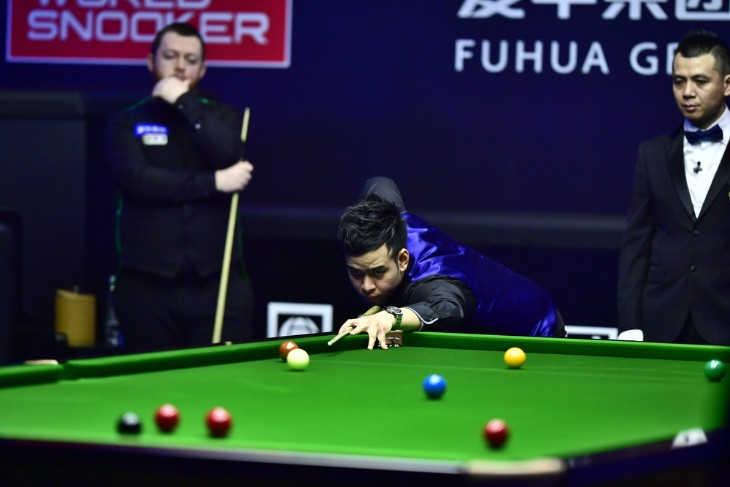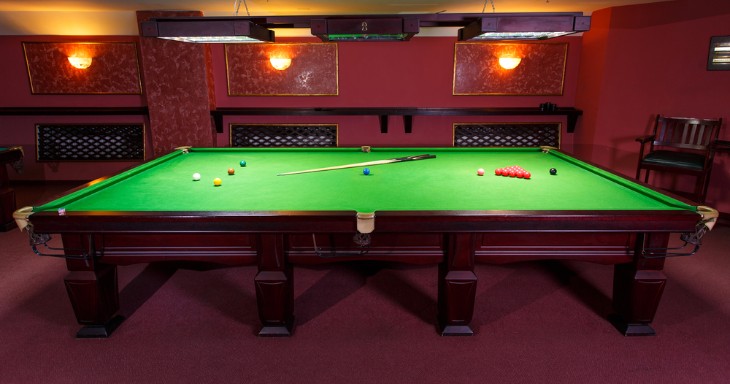The early snooker cues were considerably shorter than their modern counterparts, reflecting the simplicity of the game at the time. These cues measured around 48 inches in length, significantly shorter than the standard cues used today. It's fascinating to note that the length of a snooker cue has undergone a gradual transformation over the years to accommodate changes in the game's rules and playing styles. How long is a snooker cue today, and how did it reach its current standard length? We will explore these questions as we delve deeper into the evolution of the snooker cue.
The evolution of the snooker cue is a testament to the sport's journey from its humble beginnings to its current status as a highly competitive and popular game. To answer the question, "how long is a snooker cue," we must understand the changes that have occurred in cue design throughout history.
In the early 20th century, as snooker gained more widespread recognition and the game's intricacies became more apparent, cue lengths began to increase. Players realized that longer cues offered better control and precision. As a result, cues started to extend beyond the 50-inch mark. This trend towards longer cues continued as players sought to enhance their performance on the green baize.
The regulation length of a snooker cue, as per the World Professional Billiards and Snooker Association (WPBSA), is now set at 57 to 58 inches, with variations permitted only under specific circumstances. Understanding this standard length is crucial for players looking to compete at the highest levels of the sport.
Materials Used in Snooker Cue Construction
Traditionally, snooker cues were crafted from a single piece of wood, typically ash or maple. These cues had a uniform length, and variations in cue length were minimal. However, the demand for cues with specific characteristics led to innovations in cue construction. Today, snooker cues are predominantly made using laminated wood, allowing for greater precision in tailoring cue length to individual player preferences.
Laminated cue construction involves layering thin strips of wood to create a cue that is not only strong but also customisable in terms of length and weight distribution. This process has led to cues of varying lengths, catering to players' diverse playing styles and physique.

Standard Dimensions of a Snooker Cue
The standard length of a snooker cue, as per WPBSA regulations, falls within the range of 57 to 58 inches. This length is carefully defined to ensure that players have a consistent experience during competitions, as any significant variations in cue length could give an unfair advantage. Moreover, the weight of a snooker cue typically ranges from 16 to 18 ounces, providing players with options to fine-tune their cue's balance and feel.
These standard dimensions may seem rigid, but they serve as the foundation for competitive snooker. Players adapt to these dimensions, incorporating them into their playing styles. However, it's important to note that amateur players may choose cues that deviate from these standards, as personal preferences and comfort can also play a role in cue selection.
Variations in Snooker Cue Length
In the world of snooker, players often wonder about the significance of cue length and how it influences their game. Understanding that there can be variations in snooker cue length is essential for players who seek to tailor their equipment to their specific needs and playing style.
While the standard length of a snooker cue is set at 57 to 58 inches, it's important to note that variations exist to cater to individual preferences. Some players may opt for slightly shorter cues, typically around 56 inches, which can provide them with more control and maneuverability in tight situations. On the other hand, a longer cue, reaching up to 59 inches, can offer extended reach and leverage, particularly helpful for shots that require precision over long distances.
These variations in cue length aren't arbitrary; they are a reflection of the diversity of playing styles in snooker. A player's height, arm length, and preferred stance on the table all contribute to the decision of how long a snooker cue should be.
The Impact of Cue Length on Gameplay
A longer cue provides certain advantages, primarily in terms of reach and cue ball control. When a player uses a longer cue, they can reach shots that might be challenging with a standard-length cue. This extended reach can be advantageous when attempting to pocket balls in tight spots or when employing techniques that require precise control over the cue ball's path.
Conversely, shorter cues offer benefits in terms of maneuverability and shot control in close quarters. Players who prefer shorter cues may find it easier to navigate around the table and execute intricate shots with precision. These cues are especially favoured by those who play a more defensive or tactical style of snooker.
Choosing the Right Snooker Cue Length
Selecting the appropriate snooker cue length is a pivotal decision for players at all skill levels. To determine how long a snooker cue should be, one must consider various factors, including personal preferences, playing style, and physical attributes.
When choosing a snooker cue, players should start by evaluating their height and arm length. Taller players may find longer cues, closer to the upper limit of the standard range, more comfortable to use. Conversely, shorter players may prefer cues at the lower end of the spectrum. This consideration is essential as it ensures that players maintain proper posture and avoid overreaching, which can lead to errors in their shots.
Playing style also plays a crucial role in cue selection. Aggressive players who rely on power shots and long-range potting may benefit from longer cues that provide better leverage. In contrast, players who adopt a more measured, defensive approach may favour shorter cues for enhanced control and accuracy in tight situations. It's worth noting that some players experiment with different cue lengths to find the one that best suits their game.
Furthermore, the choice of cue length should align with personal comfort and confidence. Players should feel at ease with their cue, as this psychological comfort can contribute to better performance on the table. Ultimately, choosing the right snooker cue length is a combination of science and personal preference, and players should be willing to adapt and experiment to find their ideal cue.
Cues, regardless of their length, are typically made from wood, making them susceptible to moisture and temperature variations. To prevent warping and damage, it's vital to store your cue in a suitable case when not in use. This protective measure helps maintain the cue's straightness, which is crucial for accurate shots.
Regular cleaning is also an integral part of cue maintenance. Cleaning the cue shaft with a soft cloth and cue cleaner removes dirt and oils from your hands that can accumulate over time. Keeping the cue tip properly shaped and chalked is essential for consistent ball control.
Historical Significance of Snooker Cue Length
The historical evolution of snooker cues provides valuable insights into the game's development and the role of cue length. How long a snooker cue is today is a product of this evolution, which is deeply rooted in the history of the sport.
As snooker evolved from its origins in the late 19th century, cue length gradually increased to accommodate changes in the game's rules and playing styles. This evolution reflects the sport's transition from a casual pastime to a highly competitive and strategic discipline.
The historical significance of snooker cue length extends beyond mere measurements. It underscores the dynamic nature of snooker as a sport that adapts to the preferences and demands of players and spectators alike.

Innovations in Snooker Cue Design
The world of snooker cue design has witnessed remarkable innovations over the years, directly impacting how long a snooker cue is and its performance characteristics. These innovations have not only improved cue construction but have also enhanced the playing experience for snooker enthusiasts.
One notable innovation is the introduction of cues with interchangeable extensions. These extensions allow players to adjust the length of their cues temporarily, providing added versatility during gameplay. For instance, a player may attach an extension to their cue for a long-range shot and then remove it for a more precise close-range shot. This innovation has expanded the possibilities for players to fine-tune cue length to suit specific shots and scenarios, making it a significant development in the world of snooker cues.
Additionally, cue makers have explored new materials and technologies to improve cue performance. Advances in cue construction materials, such as carbon fibre, have resulted in cues that are both lighter and more durable. These cues maintain the standard length range while offering players improved cue balance and control, further demonstrating how cue design innovations have redefined the answer to the question of how long a snooker cue should be.
Conclusion
While the standard length set by the WPBSA remains a crucial benchmark, players of all levels have the freedom to explore variations in cue length to match their playing style and physique.
Ultimately, the answer to the question of how long a snooker cue should be is a dynamic one, influenced by tradition, technology, and individual player preferences. It is a testament to the ever-evolving nature of snooker, a sport where precision and control are paramount, and where the cue itself is a critical element in the pursuit of excellence.
For more information:




.webp)


 (1).webp)




















